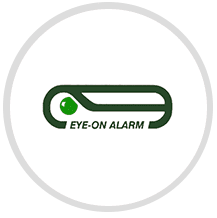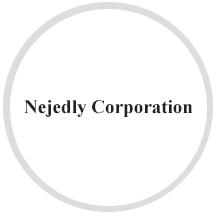Protect your business
Identify the risks

Environmental Construction
We see the difference between you and traditional contractors. We understand the intricacies of what you work with and see day after day. We get it, we know.

Adventure Sports
Very few insurance brokers understand what Adventure Sports are, let alone how to insure them.

Construction
Not every broker understands what you need. We Do Understand. If you don't stay in business, we don’t stay in business.

Electronic Security / Alarm
Low voltage has been the core of our business since 1994. Very few brokers have been at it that long even less actually know how to insure a dealer much less a central station.

Additional Industries
Looking for insurance specializing in your industry?
About Us
We are Here for You
Eclipse Marketing and Insurance Services focused on your business since 1971.
Customized Risk Programs, independent insurance coverage and tailored solutions for your trade association.

Risk Analysis Tool
Risk Management Program
Our Risk Tool helps your business address risk management concerns and lets you know what coverage is needed.
Select Your Industry to begin your Evalutation
Risk Analysis Tool
Risk Management Program
Our Risk Tool helps your business address risk management concerns and lets you know what coverage is needed.
Select Your Industry to begin your Evalutation
Testimonials
What Our Customers Have to Say About Us

We have saved not hundreds, but thousands of dollars since switching to Eclipse on both our commercial auto insurance, liability, and workman's comp. They have continued looking for better insurance deals, finding our company a better and cheaper policy at the beginning of this year. Eclipse is very quick to respond when we need special insurance documents, helping us get our contracts signed faster.
-David Brooks, A-1 Remediation Service

West Coast Builders has been a client of Eclipse Marketing and Insurance Services for over 6 years, and we have been very happy with their services during this period of time. The level of insurance expertise that is offered at Eclipse has been extremely helpful with managing and growing of this business through the years. The insurance industry in my personal opinion is one that can make or break a company, knowing whether or not you are getting the adequate coverage needed to protect the assets of your company, or whether you're paying entirely too much for that protection can be a fine line. With Eclipse Marketing and Insurance Services there has never any doubt that we have been getting the right amount coverage for a very fair market price. I feel that Marketing and Insurance Services has contributed a sizable amount in the success and further development of West Coast Builders and we have no plans of looking for insurance needs anywhere else.
-Anton D. Council, West Coast Builders

I wanted to take a moment and thank you Larry and your staff, for over 12-years of excellent service. It is comforting to know that with one phone call, to anyone of Eclipse's team members, my requests and or questions can be fulfilled promptly. Many times, I have called in a fright about one thing or another, Larry you have always been able to reduce my stress level immediately. Your guidance through the insurance maze, has proven your worth 100 times over. No need to concern myself with matters that are best left to the professionals like yourself. Eclipse Marketing & Insurance, has become a vital member in our EYE-ON ALARM family business. EYE-ON ALARM looks forward in continuing this strong relationship for many years to come. Thank You again for all of your efforts you and your staff have provided us for over a decade. Best wishes to you.
-Stephanie Schwenk, EYE-ON ALARM

It has been our pleasure to work with you and your company. The level of service that you have provided to us has far exceeded any that we have received thus far. The personal attention to our insurance needs has been very much appreciated. All requests for certificates of insurance have always been issued in a very timely manner. Both you and your staff have provided an excellent level of customer service to us, and we look forward to a continued relationship with you!
-Brian Tucker, Tucker Lath and Plastering Inc.

Eclipse Marketing & Insurance Services has not only provided us with the best available rates with top rated insurance companies for all aspects of our business needs, their personal service has also been the best we have ever had. Simply stated, Eclipse has earned our loyalty and repeat business.
-Kyle Smith, Your Energy Source

As we renew our policies with you again for what must be about the 15th year, I want to thank you for making this process easy and affordable. Prior to working with you we always had trouble finding the specialty insurance that we need for our type of business, we kept finding that the policies covered some things but not all that were required by our customers. You have saved us money and time over the years and it is a pleasure working with you and your staff. All issues and claims we have had have been taken care of in a fast and efficient manner, in the fast paced world we work in seldom does anyone take the time to say thanks and we appreciate the effort. Please pat yourself on the back for a job well done.
-Doug Scheer, Scheer Home Systems

We have saved not hundreds, but thousands of dollars since switching to Eclipse on both our commercial auto insurance, liability, and workman's comp. They have continued looking for better insurance deals, finding our company a better and cheaper policy at the beginning of this year. Eclipse is very quick to respond when we need special insurance documents, helping us get our contracts signed faster.
-John T. Nejedly, Nejedly Corporation

We have been clients of Eclipse Marketing and Insurance Services for over four years. We have shopped around for insurance every few years to get an idea of the insurance market. When Jon Brockway met with us to go over areas of coverage for our business we were very pleased with the presentation. Eclipse Marketing and Insurance Services continues to provide us with the best insurance companies with an affordable cost. We have been very impressed with the handling of our account and will continue to do business with them for quite some time. Over the years I have had the opportunity to get to know Jon Brockway and Gabe Whitney by conversing with them not only on insurance needs but as friends also. They are both very personable with a very professional manner.
-Sharon K. Martin, Superior Modular Transport, Inc.
Our Blog
Business and News Articles
Selecting an Insurer: Admitted / Non-Admitted & Financial Strength
Some insurance buyers express concern over whether a carrier is Admitted or non-Admitted, but what…
What Information Do You Need to Collect for a Work Comp Claim?
Monday morning you get a call from one of your managers. She says: “Joe just…
Workers Comp and Independent Contractors: What you need to know
Previously, we discussed how a company can protect itself and it’s own insurance from the…













